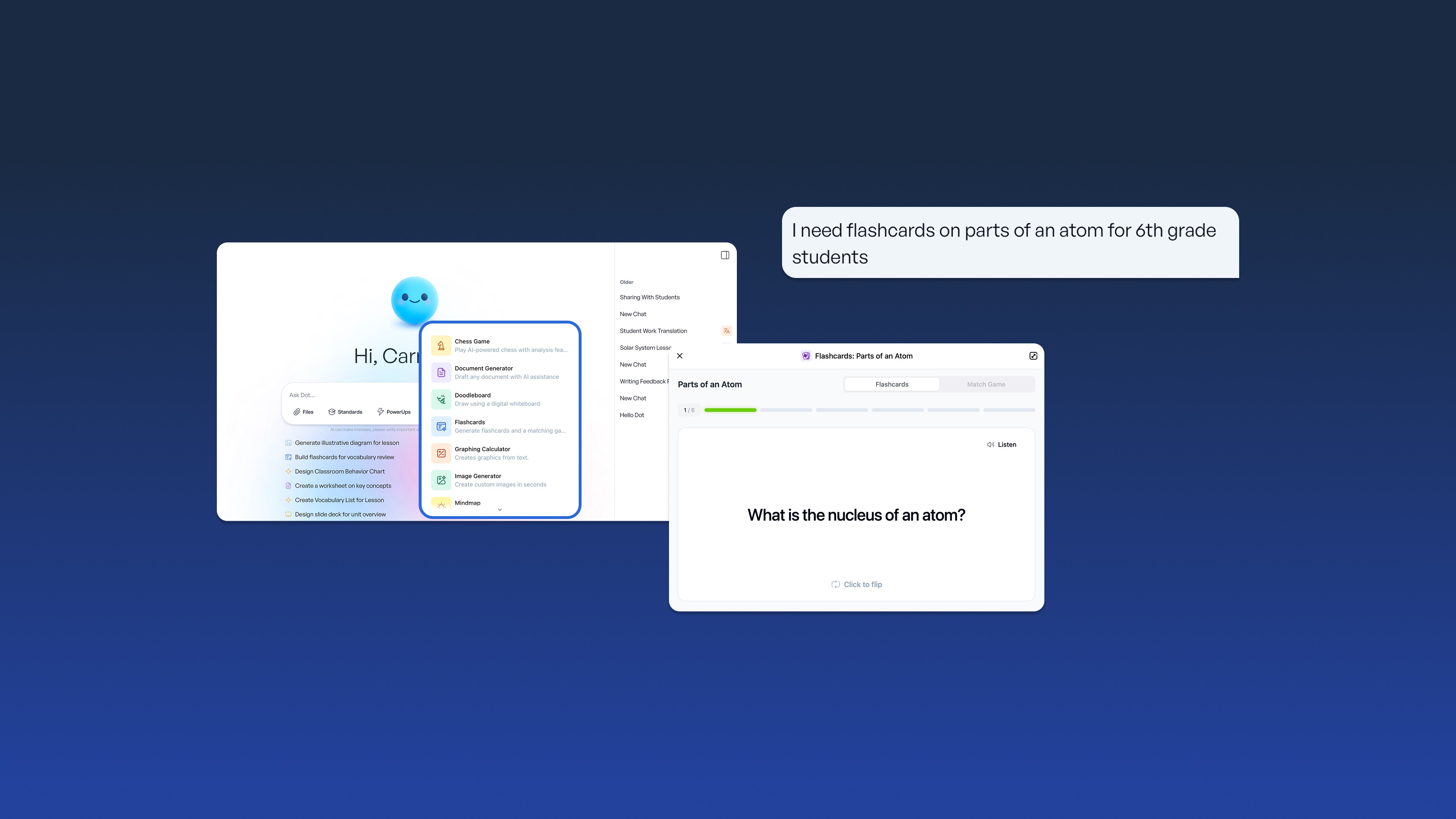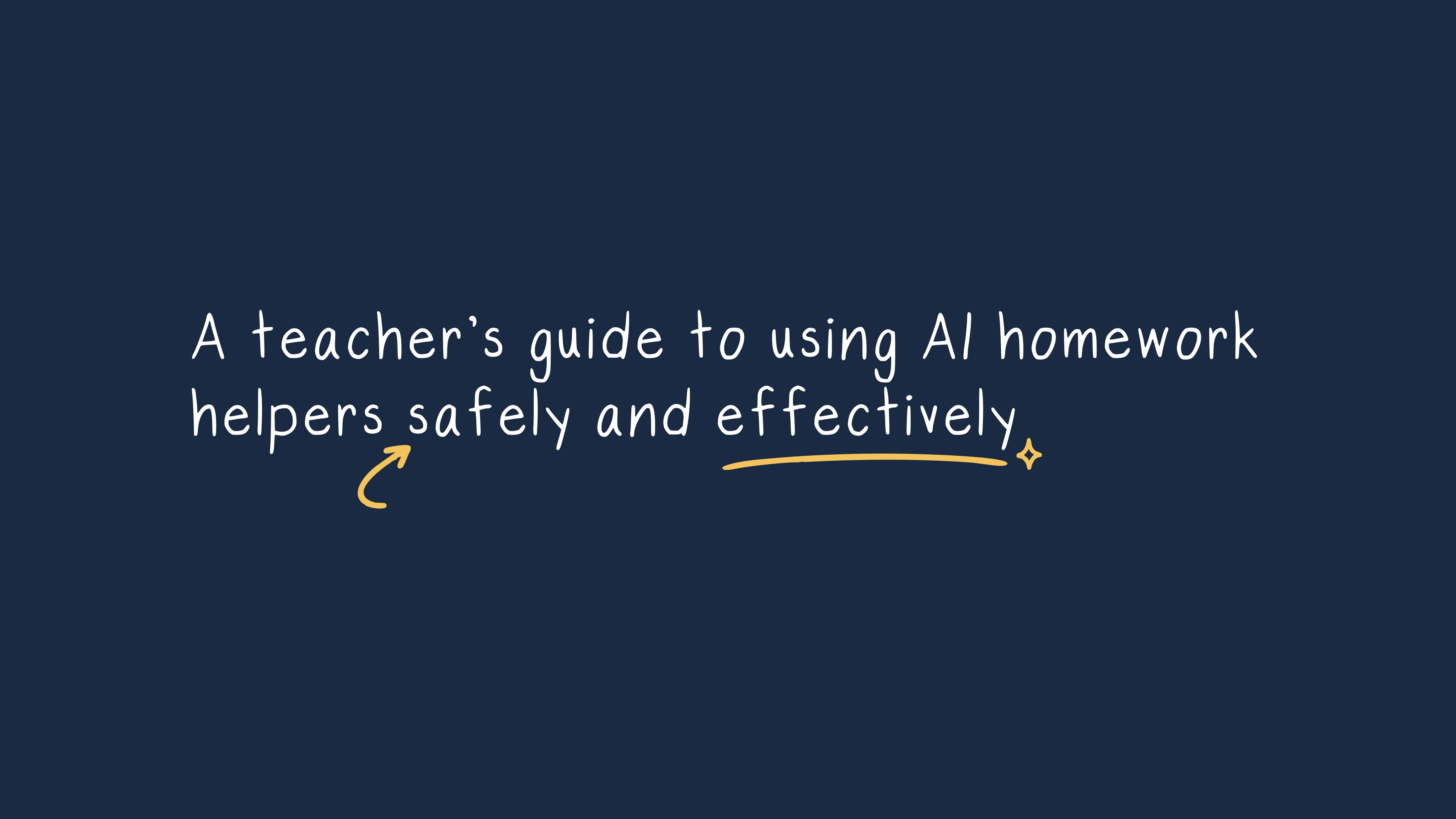Nikki Muncey
Apr 30, 2025
Get started
SchoolAI is free for teachers
Classrooms today are more diverse than ever, as millions of students opt for study-abroad opportunities every year. This diversity brings both opportunities and challenges to education. International students face language barriers and culture shock, and have diverse educational backgrounds that can affect their academic performance.
AI is stepping in as education's supportive partner, offering innovative solutions for engaging international students. From platforms that adapt alongside students to translation tools that break down barriers in real time, AI is enhancing how we teach in diverse classrooms. Research backs this up — a study by Andrade (2006) found that 70% of faculty point to language barriers as a major roadblock to international student success.
This article explores practical AI strategies that create better learning environments for international students, showing how these tools can help overcome language hurdles, adapt to new cultures, and provide personalized support for academic success.
Understanding the needs of international students
International students face unique challenges that significantly impact their learning outcomes. Beyond basic language comprehension, many struggle with academic writing conventions, structuring arguments, and using appropriate grammar.
Participation in classroom discussions poses another significant hurdle. Non-native speakers often hesitate to speak up due to fear of accent-related bias or concerns about being misunderstood. This reluctance can be further compounded by cultural expectations of authority, particularly among students from cultures who may fear being perceived as disrespectful for raising questions or challenging views.
Adapting to different pedagogical styles presents an additional challenge. Students coming from didactic or lecture-based systems may find the participatory style of Western classrooms overwhelming. Cultural isolation and difficulties forming connections with peers further exacerbate these challenges, limiting opportunities for collaborative learning and gaining the support of their peers.
Leveraging AI to improve student engagement
AI creates personalized learning opportunities that can transform the educational experience for international students.
Adaptive learning technologies, like SchoolAI, act as responsive guides that adjust to each student's pace and style. These systems observe performance in real-time, identify struggles, and provide targeted resources—enabling international students to engage with material at their own speed. For instance, AI tools in math education adapt mathematical instruction to each student's proficiency level, making complex concepts more accessible. The tools can also communicate in the student’s native language for better comprehension.
Virtual tutors can offer 24/7 subject help, creating learning paths tailored to what students already know—ideal for those whose previous educational experiences differ from local expectations.
The immediate feedback revolution is another advantage. AI assistants can provide personalized responses on student work, helping non-native speakers identify and address mistakes immediately.
Beyond individual assignments, AI identifies patterns in engagement and performance that educators might otherwise miss. For international students navigating cultural shifts and language barriers, this early identification system helps ensure they stay on track academically.
AI and language support for international students
AI is helping to break language barriers through personalized support tools.
Platforms like Duolingo and Grammarly offer personalized English practice and improvement suggestions in real-time. When tackling complex academic work, these personalized AI learning tools help refine grammar, expand vocabulary, and structure essays effectively.
Real-time translation tools bridge the communication divide instantly. Some institutions are exploring AI earpieces that translate as the professor speaks, helping non-native speakers follow discussions more effectively.
Speech recognition technology provides private spaces to practice pronunciation without judgment, especially valuable for mastering technical academic terms.
AI-powered transcription and subtitling make educational videos accessible in multiple languages, allowing students to review lecture content–with captions that are tailored to their needs–at their own pace.
Fostering cultural inclusivity with AI
AI can enhance cultural inclusivity by generating case studies and examples that reflect the diverse backgrounds of students. For instance, platforms like ChatGPT can create activities connected to students' home regions, making learning relevant and engaging for everyone. This customization helps international students connect new concepts to their existing knowledge, such as a business ethics case study that features scenarios from a student's home country rather than unfamiliar examples.
Beyond content customization, AI personalizes learning pathways based on individual cultural backgrounds and learning preferences, helping international students feel recognized and valued.
Enhancing engagement through interactive tools
AI-powered games and interactive learning methods create immersive experiences that foster ongoing student participation.
Platforms like SchoolAI use AI to adapt game elements to each student's level, maintaining an experience that balances challenge and achievement.
AI chatbots create supportive environments to practice real-world conversations without fear of judgment.
Gamified environments also make learning enjoyable and rewarding, particularly important for students who might hesitate to participate due to language uncertainty or cultural differences.
Real-time analytics and bridging educational gaps
AI-driven analytics and AI assessment tools transform the feedback experience for international students by evaluating their work and offering personalized suggestions instantly. For international students who might hesitate to ask questions because of language barriers, this immediate guidance is invaluable.
Predictive analytics identify struggling students before they fall behind, enabling early intervention. Stanford's M-Powering Teachers Tool analyzes classroom conversations and guides teachers to improve practices, such as building effectively on student contributions.
AI platforms precisely identify specific areas of difficulty, such as academic writing conventions or subject-specific vocabulary, making interventions more effective. A study at BYU–Hawaii found AI significantly supported students with English language learning, especially with complex college vocabulary.
Ethical considerations in AI implementation
When integrating AI tools into the curriculum, ethics must always be a top priority.
Data privacy is a major concern, requiring strong encryption, clear usage policies, and regular audits to ensure compliance with laws like FERPA.
AI systems must avoid amplifying biases that could disadvantage certain groups of international students. This requires fairness-aware algorithms and regular bias audits to ensure positive outcomes for all students.
Cultural sensitivity matters deeply when using AI with international students. AI may miss cultural nuances and linguistic variations, potentially working less effectively for certain groups. Transparency in how AI works and makes decisions builds trust among students and educators.
Educators should also focus on promoting AI literacy among students, using frameworks like the 4 C's framework of AI literacy to ensure they understand how to engage with AI responsibly.
How teachers can use AI to support engagement with international students
To begin implementing AI in your international classroom:
Identify the specific challenges your international students face
Find AI tools that address these specific issues
Begin with just one or two applications
Gather student feedback on tool effectiveness
Expand your AI toolkit gradually
When evaluating AI tools, look for features particularly beneficial for international students, including:
Real-time analytics that identify students needing additional support
Adaptive content that adjusts to each student's level and learning preference
Multilingual support for delivering content and assessments
Transforming the teaching and learning experience
AI creates transformative opportunities for international students by enabling personalized learning experiences, addressing language barriers, and fostering culturally inclusive classrooms.
These tools help create equitable educational environments through adaptive platforms, real-time translation, and content that connects to students' diverse backgrounds. As always, maintaining human guidance remains essential so that technology enhances, rather than replaces, the human connection that makes teaching meaningful.
For educators working with international students, AI offers an exciting opportunity to create learning environments where all students can thrive academically and socially. Ready to explore how AI can transform your international classroom? Visit SchoolAI today to discover customized solutions that bridge cultural and linguistic gaps while enhancing engagement for every student in your diverse classroom.
Key takeaways
AI provides language support tools, including real-time translation, transcription services, and personalized grammar assistance to help international students overcome communication barriers.
Adaptive learning technologies create personalized pathways that adjust to individual students' pace, learning style, and cultural background, making education more accessible.
AI-powered tools promote cultural inclusivity by generating diverse case studies and examples that reflect the backgrounds and experiences of international students.
Interactive AI environments like educational games and conversation practice tools create low-stress opportunities for international students to participate without fear of judgment.
Implementing AI requires careful attention to ethical considerations, including data privacy, algorithmic bias, and ensuring cultural sensitivity in automated systems.
Transform your teaching with AI-powered tools for personalized learning
Always free for teachers.
Recent posts
REFRESH: AI adoption challenges in schools: How to prepare staff and infrastructure
Jennifer Grimes
—
Dec 19, 2025
REFRESH: AI integration: Adding AI tools into your school’s existing technology
Stephanie Howell
—
Dec 19, 2025
Create lesson plans that work: Strategic planning for teachers
Cheska Robinson
—
Dec 18, 2025
A teacher’s guide to using AI homework helpers safely and effectively
Heidi Morton
—
Dec 18, 2025





